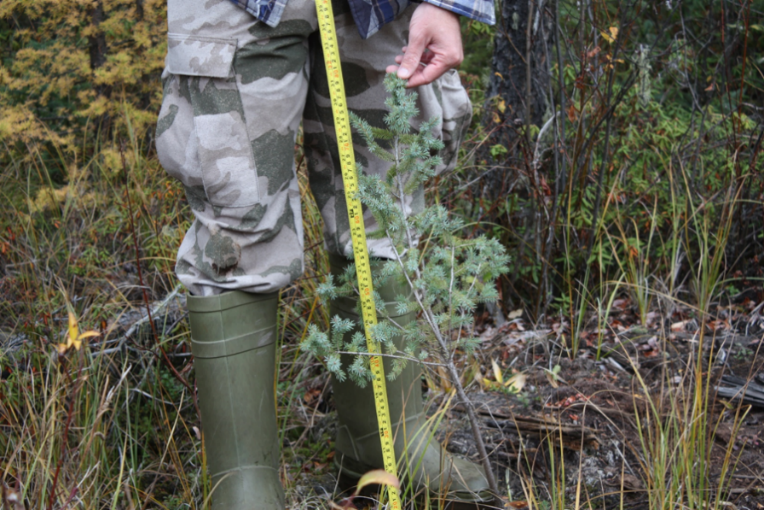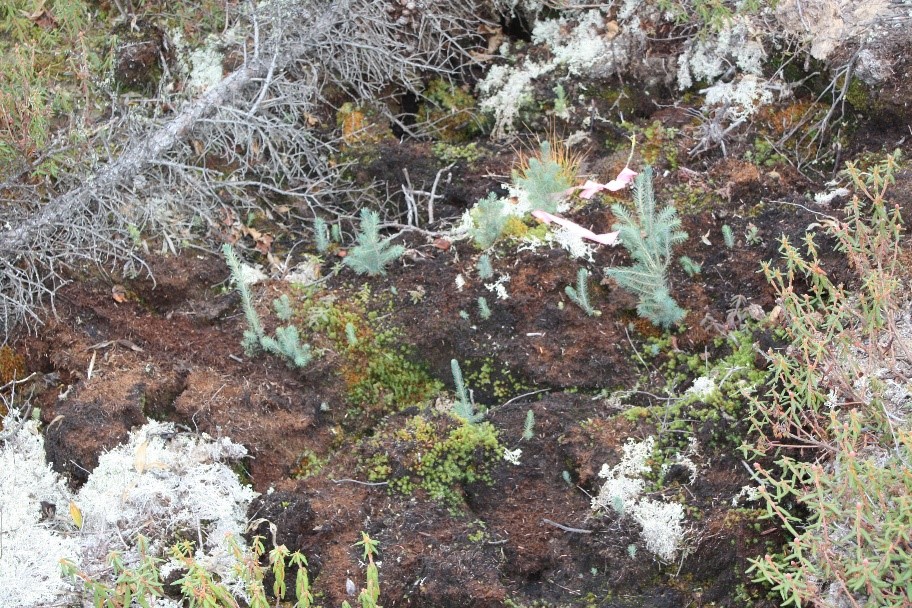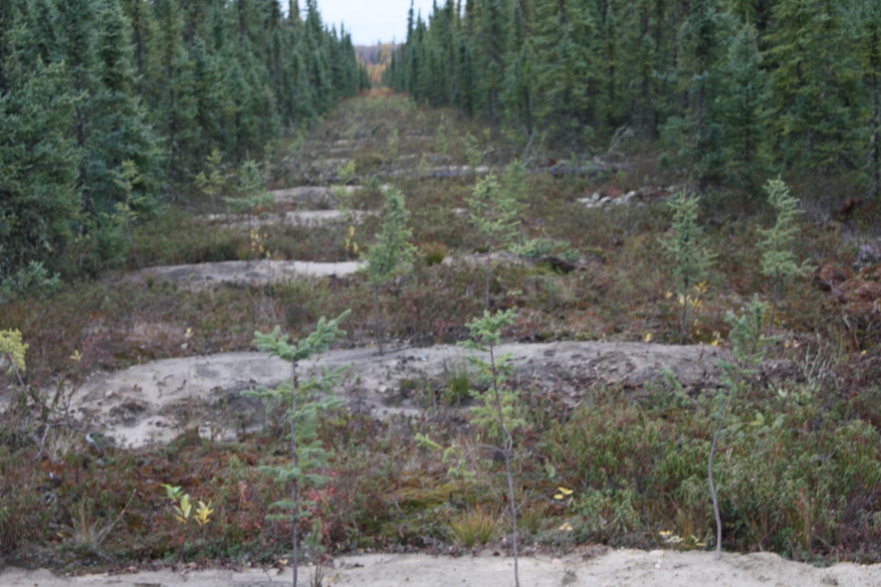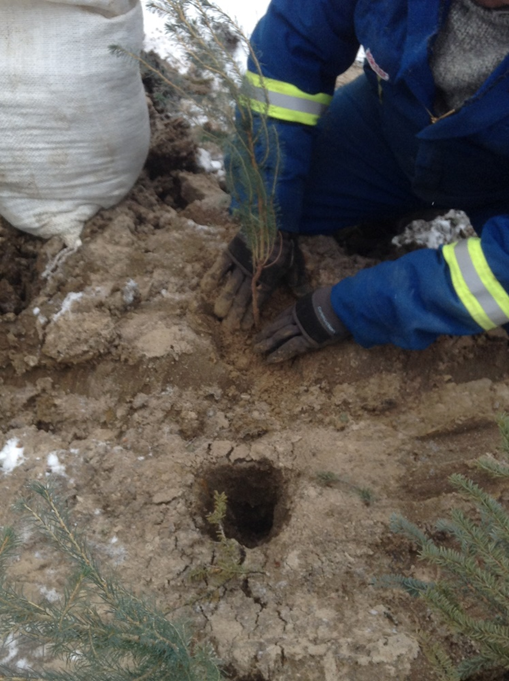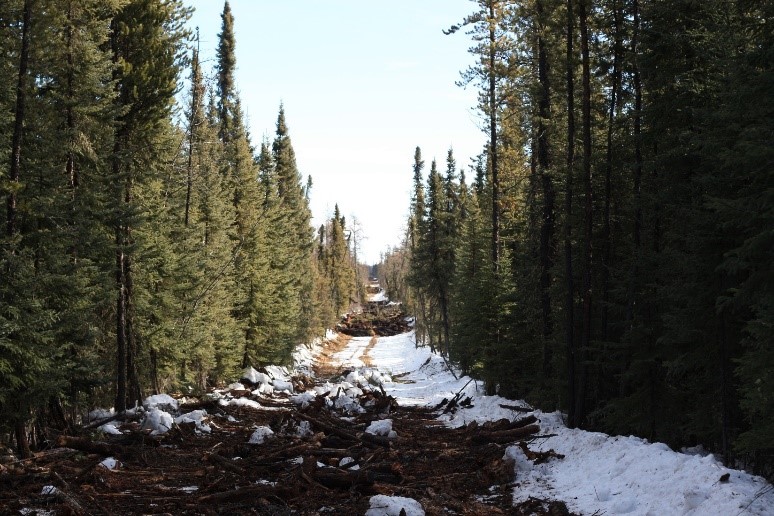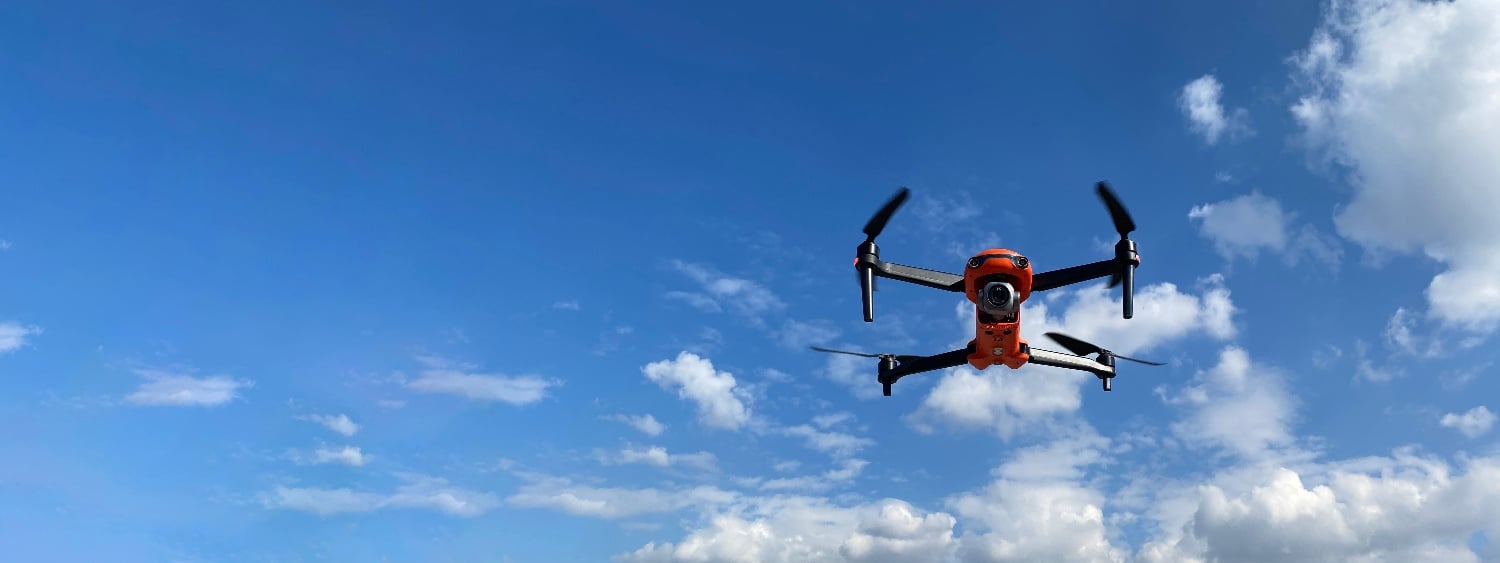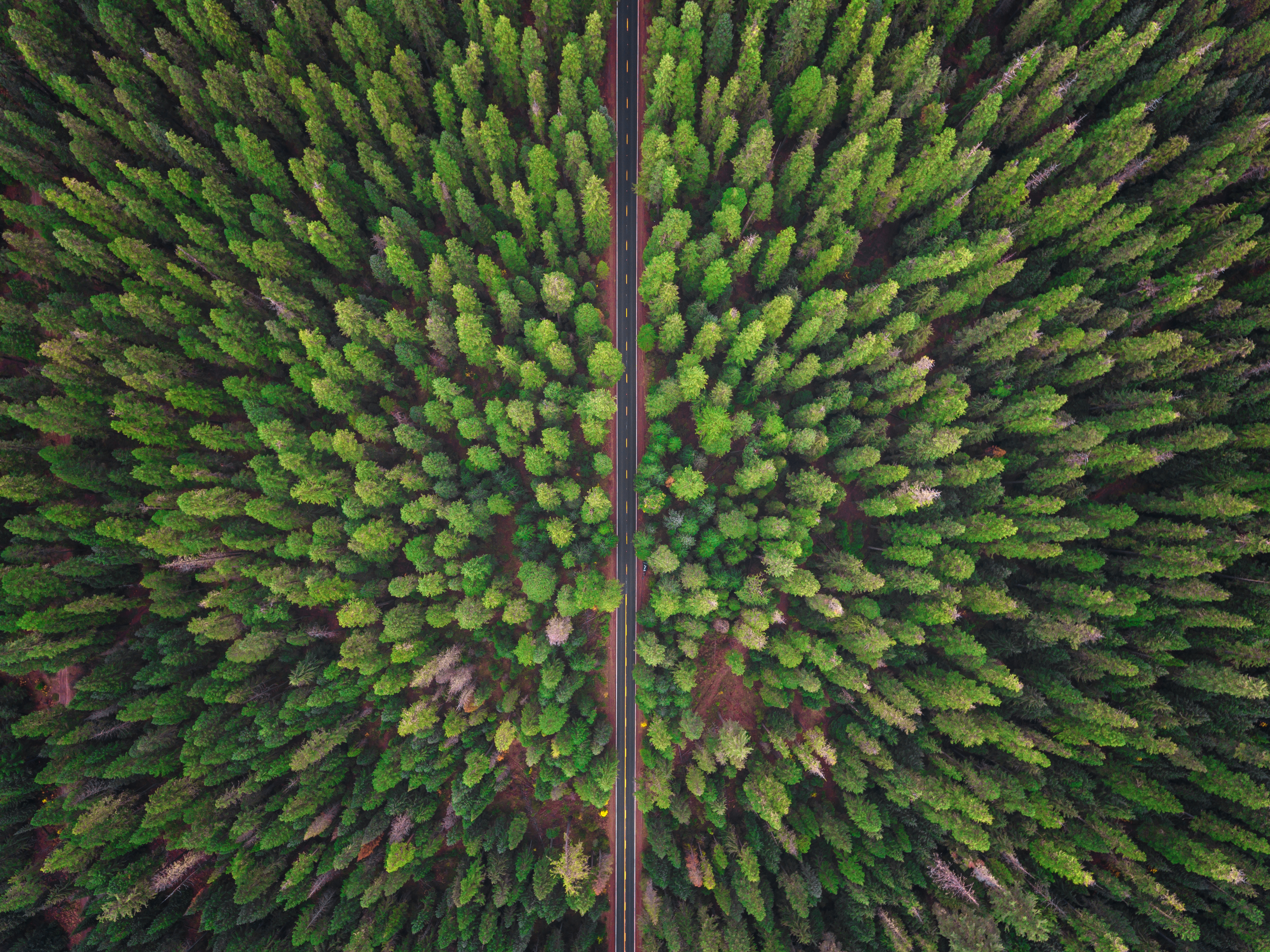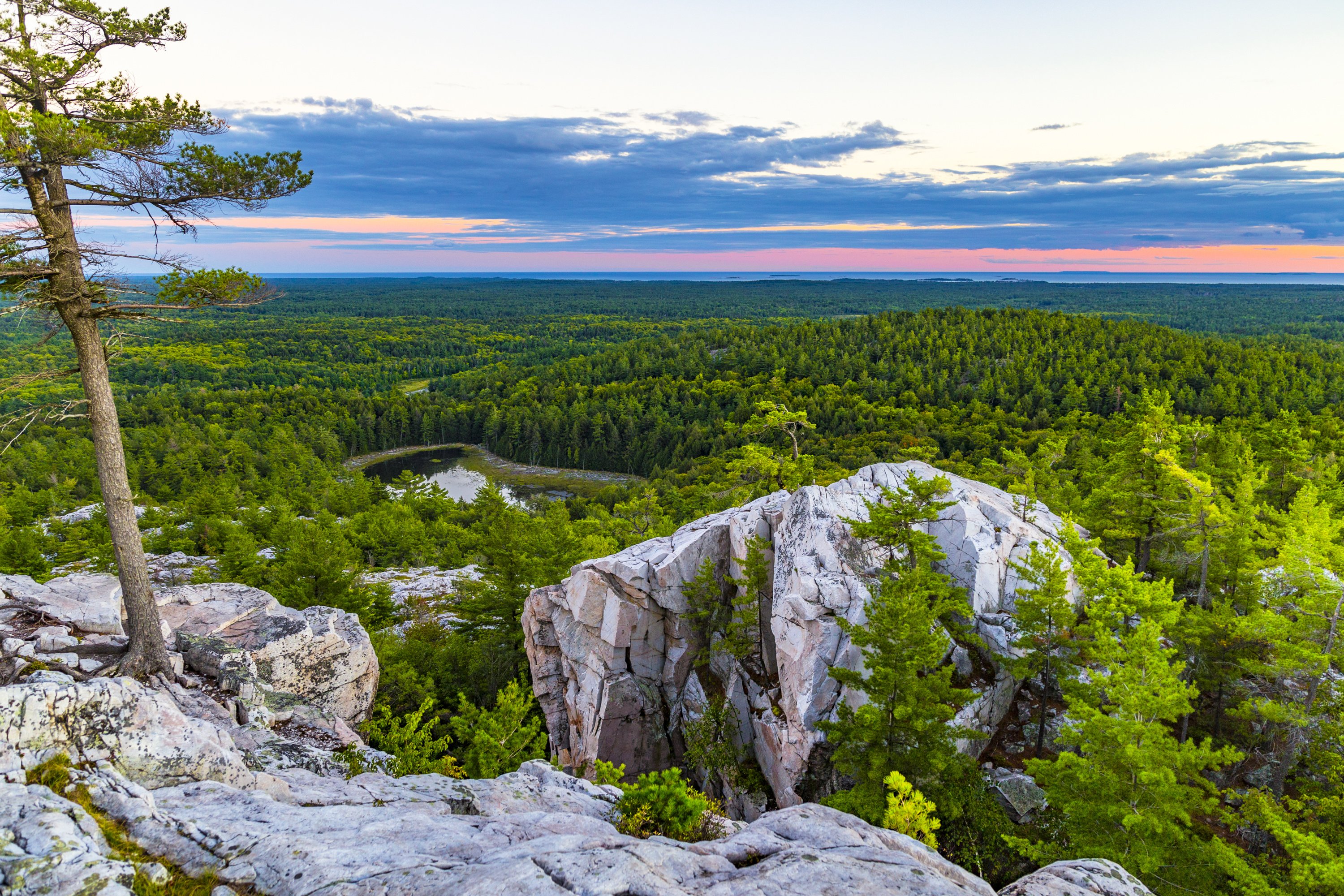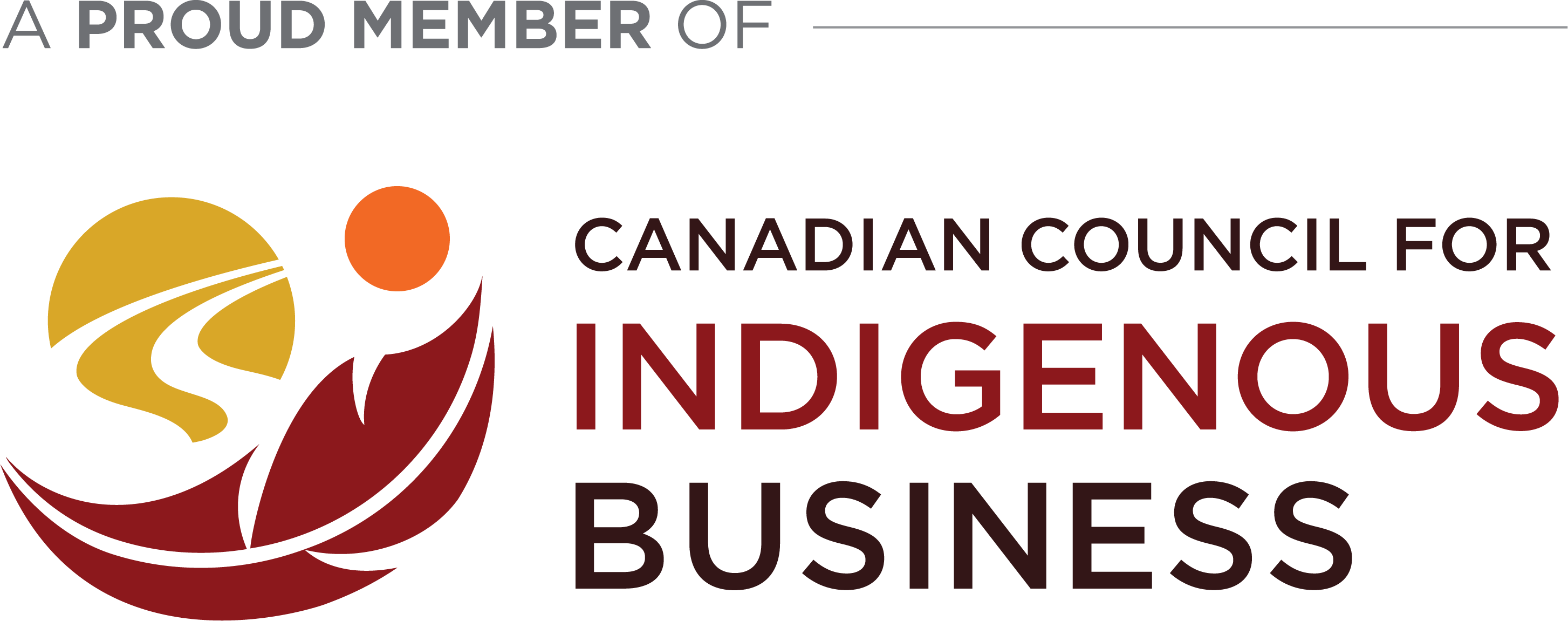Monitoring programs provide us with valuable information to help assess the various innovative linear restoration techniques we have trialled and their effectiveness at achieving desired ecological outcomes including improving undisturbed caribou habitat.
For seven years, Silvacom has revisited linear restoration monitoring plots. We have chosen three key takeaway messages that we think are worth sharing:
1. Year after year, we have seen excellent survival and growth rates of winter-planted seedlings
The seedlings that were planted on mounds are doing very well and growth is exceeding expectations. Seedling survival rates are high and estimated to be between 75-95% for wet lowland conditions. In areas where there was some mortality, reasons noted include damage from wildlife, competition from other vegetation, and mounds with insufficient mineral soil.
2. Our treatments have initiated significant natural regeneration
Exposing mineral soil resulted in the natural establishment of trees seeding in from the forests adjacent to the seismic lines. There were also shrubs, grasses, sedges and mosses seeding in. Line segments not treated with mounding or scarification did not have any natural seeding in. Going forward, this presents an opportunity to spend less time tree planting and instead focus on techniques that expose mineral soil such as mounding and scarification.
3. Our innovative planting techniques have been successful in helping achieve project goals
A wide variety of planting techniques were piloted during the linear restoration projects to help achieve project goals. As a result of unforeseen operational constraints, we had to implement some innovative solutions. Some of these constraints included; thick ground frost layers which slowed or restricted production, hard clay mounds restricting seedling planting, and/or a reduced operational season due to warming towards the end of the project. These new techniques have not only helped achieve project goals, and increase safety and production, but have also reduced the operational costs associated with linear restoration.
Examples include:
Bar mounds
Bar mounds are dug adjacent to the seismic line and then the mineral soil is placed perpendicular to the line, to cover the entire line. Using the bar mounding technique has reduced the risk of injury to individuals working on projects. When comparing the size of a bar mound to a traditional mound, one bar mound is equivalent to three traditional mounds. It was clear to the monitoring team that the bar mounds had high seedling survival rates and an abundance of natural regeneration. It is believed that this is an excellent technique for increasing productivity and reducing costs associated with linear restoration.
Flower pot mounds
Flower pot mounds are dug in areas of hard/frozen clay; the excavator uses the bucket teeth to poke holes in the mound which are then planted with seedlings by the tree planters. The rest of the hole is filled in with loose mineral soil. It would not have been possible for planters to plant seedlings on these mounds if it wasn’t for this technique. These mounds were monitored this year and were observed to be holding together well with an abundance of seedlings, shrubs, and mosses present.
Scarification with coarse woody debris
Scarification with coarse woody debris is a treatment where the excavator scrapes off the top layer of humus/soil and exposes mineral soil for naturals to regenerate on. Course woody material gathered adjacent to the line is placed on top of the mineral soil. This treatment was needed on upland sites where the ground was frozen such that mounds could not be dug during the winter. Scarification with coarse woody material is most effective when lots of mineral soil is exposed. Coarse woody debris placement is important for reducing human and wildlife movement on lines but too much can limit the successful establishment of natural seeding by reducing the amount of light hitting the forest floor.
Leap frog treatment
The leap frog treatment is a method that treats 100 metres of seismic line and then leaves 100 metres untreated. This technique was tested to see if it is possible to increase production and reduce or eliminate wildlife activity by only having to treat half of a particular seismic line. While visiting the treated portions of the leap frog lines, it was noted that there was natural vegetation seeding in on exposed mineral soil while the untreated portions had very little vegetation apart from grasses and mosses.
Conclusion
The results of our monitoring programs to date illustrate the success of the linear restoration treatments in establishing vegetation growth on legacy seismic lines. Planted seedlings have survived, grown, and are on track to meet ecological recovery targets and reduce footprint within the carefully selected critical caribou habitat areas. Natural regeneration has also been kick-started in treated areas and the successfully piloted treatment techniques are helping to validate and expand the linear restoration toolkit.
The learnings from these monitoring programs will help guide future linear restoration projects by increasing on-site safety, reducing costs, increasing productivity, and helping initiate new and creative ways to improve linear restoration.
For more information on our linear restoration services, download our info sheet.

